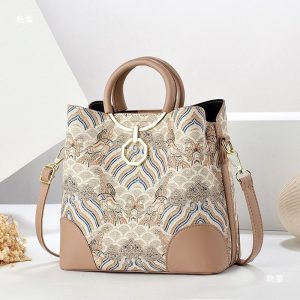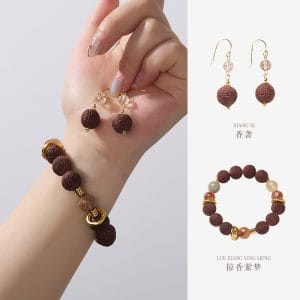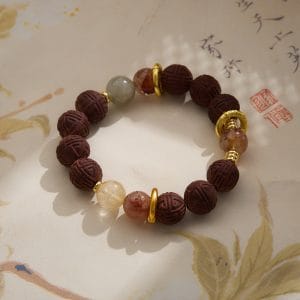Background
In a world increasingly dominated by synthetic materials and chemical processes, the ancient practice of plant-dyeing fabric offers a refreshing return to nature’s own vibrant palette. For millennia, human civilizations have harnessed the colors hidden in roots, leaves, berries, and barks to adorn their textiles, creating hues that are not only beautiful but deeply connected to the environment. Unlike modern synthetic dyes, which often rely on petroleum-based chemicals and can have significant environmental impacts, plant dyes are derived from renewable resources and biodegradable compounds. This method of coloring fabric is more than just a technique; it’s an art form that requires patience, knowledge, and a deep appreciation for the natural world. As sustainability becomes a pressing concern in the fashion and textile industries, plant-dyed fabrics are experiencing a renaissance, appealing to those who seek authenticity, eco-friendliness, and a tangible link to traditional craftsmanship.

Why It Matters
The process of creating plant-dyed fabric begins with the careful selection of dye sources, each offering a unique range of colors depending on the plant part used, the season of harvest, and even the soil conditions. For instance, madder root yields rich reds and oranges, while indigo leaves provide iconic blues that have been prized across cultures for centuries. Weld produces bright yellows, and walnut hulls create deep browns. The preparation involves extracting color through boiling, fermenting, or soaking the plant material, often requiring specific pH levels or mordants—substances like alum or iron—to fix the dye to the fibers and enhance colorfastness. This intricate process underscores the artistry involved; it’s not merely about applying color but understanding the chemistry and behavior of natural materials. Every batch of dye is slightly unique, resulting in variations that make each piece of fabric one-of-a-kind, celebrating imperfection and individuality in a way that mass production cannot replicate.
Historically, plant dyeing was integral to cultural identities and economies worldwide. In ancient Egypt, blue dyes from indigo were used in burial cloths for pharaohs, symbolizing divinity and protection. In Asia, techniques for creating intricate patterns with plant dyes, such as Japan’s shibori or India’s bandhani, became highly refined art forms passed down through generations. European dyers guilds in the Middle Ages guarded recipes for colors like Tyrian purple, derived from sea snails, or kermes red from insects, though many plant-based alternatives were also developed. The colonization era saw the global exchange of dye plants, like cochineal from the Americas, which revolutionized red dyes in Europe. However, the invention of synthetic dyes in the 19th century, starting with William Perkin’s mauveine in 1856, led to a dramatic decline in natural dye use due to cheaper, more consistent, and vibrant alternatives. This shift had cultural ramifications, disconnecting communities from traditional practices and contributing to environmental degradation through chemical runoff and waste.
Today, the revival of plant-dyed fabrics is driven by a growing awareness of sustainability and ethical consumption. The textile industry is one of the largest polluters globally, with synthetic dyeing processes consuming vast amounts of water and releasing toxic chemicals into waterways. In contrast, plant dyeing offers a closed-loop system where waste products, such as spent dye baths, can often be composted or safely returned to the environment. This aligns with principles of circular economy and reduces the carbon footprint associated with textile production. Moreover, plant dyeing supports biodiversity by encouraging the cultivation of dye plants, which can be integrated into regenerative agricultural practices. For artisans and small-scale producers, it provides economic opportunities that honor cultural heritage and promote slow fashion—a countermovement to fast fashion’s disposable mentality. Consumers are increasingly valuing stories behind their garments, and plant-dyed items often come with narratives of craftsmanship, locality, and ecological responsibility.
According to a recent study published in the Journal of Cleaner Production, plant-based dyes demonstrate significantly lower environmental impacts compared to synthetic counterparts, particularly in terms of water pollution and energy consumption. The research, conducted by a team at the University of Sustainable Textiles, analyzed life cycle assessments of various dyeing methods and found that natural dyes reduced toxic chemical release by up to 80% in controlled artisanal settings. Additionally, the study highlighted that when combined with organic farming of dye plants, the process could sequester carbon and improve soil health, offering dual benefits for climate mitigation. These findings underscore the potential for scaling plant dyeing technologies with modern innovations to make them more efficient and accessible without compromising their ecological advantages.
Despite its benefits, plant dyeing faces challenges in scalability and consistency, which are key demands of the global textile market. Natural dyes can be more time-consuming to produce, require larger land areas for cultivating dye plants, and may exhibit variations in color due to natural factors like weather and soil composition. This unpredictability is often seen as a drawback in industrial contexts where uniformity is prized. However, many advocates argue that this very characteristic adds value, creating unique, heirloom-quality textiles that tell a story. Innovations are emerging to address these challenges, such as developing standardized extraction techniques, using biotechnology to enhance pigment yields, and creating hybrid systems that combine natural dyes with eco-friendly mordants. Collaborations between scientists, designers, and traditional dyers are paving the way for a new era where plant-dyed fabrics can meet both aesthetic and functional demands of contemporary consumers while staying true to sustainable principles.
Looking ahead, the future of plant-dyed fabric lies in education, innovation, and cultural preservation. Initiatives to teach natural dyeing techniques in schools and communities can foster a deeper connection to nature and craft, ensuring that this knowledge is not lost. Technological advancements, such as digital color matching for natural dyes or AI-assisted cultivation optimization, could bridge the gap between artisanal methods and mass production. Furthermore, policies supporting sustainable textiles, like subsidies for organic dye plant farming or regulations limiting synthetic dye use, could accelerate adoption. As consumers become more discerning, the demand for transparency and authenticity will likely continue to grow, positioning plant-dyed fabrics not as a niche trend but as a cornerstone of a more resilient and ethical textile industry. Embracing these age-old practices with a modern twist offers a path forward—one where beauty, sustainability, and culture intertwine seamlessly.
You May Also Like
The Palace Museum Paper-Cut Light Art Fridge Magnets: Chinese Cultural Style Creative Gift Series
Price range: $27.00 through $36.00 Select options This product has multiple variants. The options may be chosen on the product page- handmade-tote-ethnic-boho-large-capacity-shoulder-bag/" class="woocommerce-LoopProduct-link woocommerce-loop-product__link">Add to cart


Guangxi Zhuang Brocade Handmade Tote – Ethnic Boho Large-Capacity Shoulder Bag
Original price was: $172.00.$150.00Current price is: $150.00. Add to cart Ancient Craft Herbal Scented Bead Bracelet with Gold Rutile Quartz, Paired with Sterling Silver (925) Hook Earrings
Original price was: $322.00.$198.00Current price is: $198.00. Add to cartHandwoven Zhuang Brocade Tote Bag – Large-Capacity Boho Shoulder Bag
Original price was: $178.00.$154.00Current price is: $154.00. Add to cart






